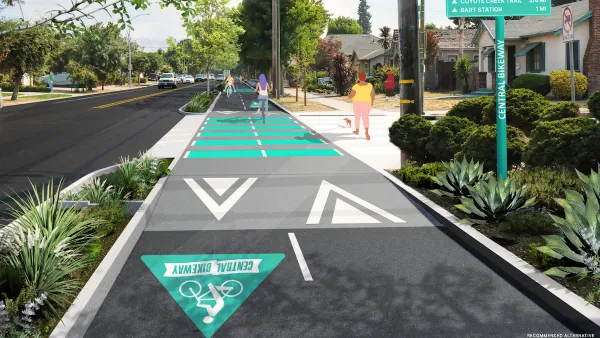More churches and municipalities are saying ‘Yes in God’s Backyard.’

The growing ‘Yes in God’s Backyard’ movement is gaining support in faith-based communities around the country, reports Rachel M. Cohen in Vox, as more churches and faith institutions find themselves called to make an impact on the affordable housing crisis. According to Cohen, “The Terner Center for Housing Innovation at UC Berkeley estimates that, across California, there are more than 47,00 acres of land owned by faith-based organizations that could potentially be developed into affordable housing.”
“And amid a thicket of local land-use regulations that complicate the construction, some elected officials are looking for ways to nudge these efforts along.” Cities like San Diego have adjusted their zoning laws to allow places of worship to build housing on their properties, and California followed suit with the statewide Affordable Housing on Faith Lands Act.
Faith leaders are also interested in housing because congregations are declining, making church properties less useful. “Some religious institutions want to build housing as a new way to welcome strangers and care for poor people in their midst, while others are thinking more about their overall institutional legacy, especially as their membership continues to shrink.”
FULL STORY: Yes in God’s backyard? This housing solution may be the answer to your prayers.

Planetizen Federal Action Tracker
A weekly monitor of how Trump’s orders and actions are impacting planners and planning in America.

Silicon Valley ‘Bike Superhighway’ Awarded $14M State Grant
A Caltrans grant brings the 10-mile Central Bikeway project connecting Santa Clara and East San Jose closer to fruition.

Amtrak Cutting Jobs, Funding to High-Speed Rail
The agency plans to cut 10 percent of its workforce and has confirmed it will not fund new high-speed rail projects.

California Set to Increase Electric Truck Chargers by 25%
The California Transportation Commission approved funding for an additional 500 charging ports for electric trucks along some of the state’s busiest freight corridors.

21 Climate Resilience Projects Cancelled by the EPA
The federal government has pulled funding for at least 21 projects related to farming, food systems, and environmental justice to comply with one of Trump’s early executive orders.

Trump Executive Order on Homelessness Calls for Forced Institutionalization
The order seeks to remove legal precedents and consent decrees that prevent cities from moving unhoused people from the street to treatment centers.
Urban Design for Planners 1: Software Tools
This six-course series explores essential urban design concepts using open source software and equips planners with the tools they need to participate fully in the urban design process.
Planning for Universal Design
Learn the tools for implementing Universal Design in planning regulations.
Yukon Government
Caltrans
New Jersey Institute of Technology
Mpact (founded as Rail~Volution)
City of Camden Redevelopment Agency
City of Norman, Oklahoma
City of Portland
City of Laramie





























